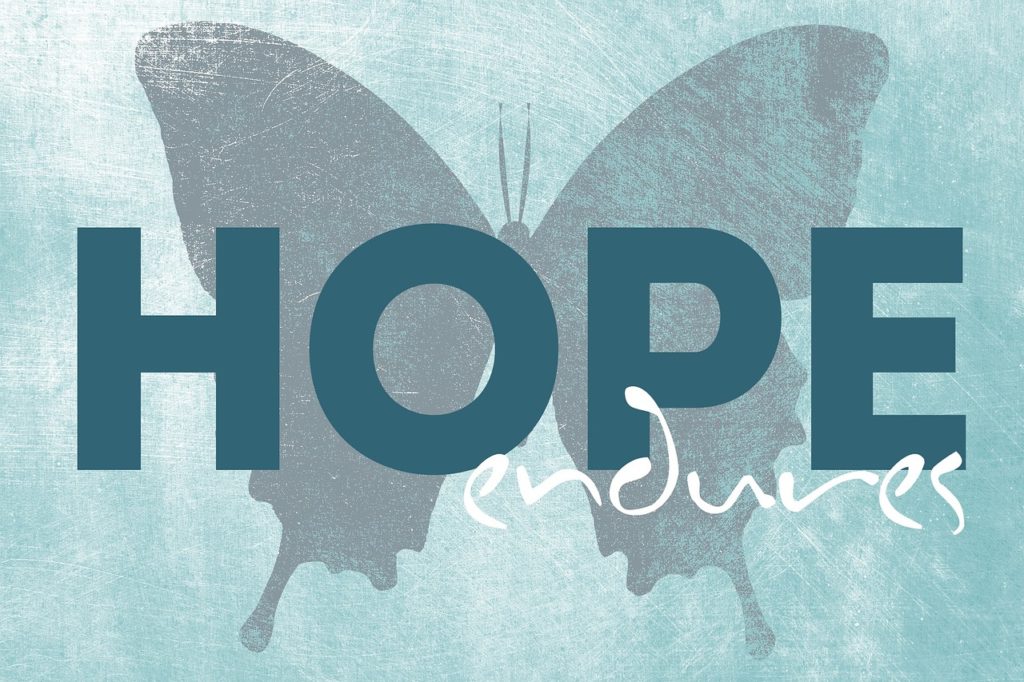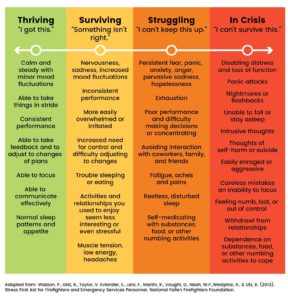
Keeping Hope Alive
By Dr. Marina Heifetz, C.Psych
Just as hope for pandemic to be over began to rise, Omicron hit the world. Given the current new wave of the pandemic and the increased frustration, one of the most important ways to stay resilient and mentally healthy is to continue to have hope. In Brene Brown’s new book Atlas of the Heart, she likens hope to be as essential as air for us.
Is Hope a Feeling or a Way of Thinking?
Interestingly, while many may assume that hope is a warm, pleasant emotion that helps us stay positive about the world of possibilities, hope is actually considered to be a combination of cognitive and affective processes.
Charles R. Snyder, a psychologist specializing in positive psychology, developed the “Hope Theory,” which includes the following components:
- Having goal-oriented thoughts helps guide us to take steps toward our values. Within this step is where we ask ourselves “Where do I want to go?” and “What is important to me?”
- Having developed strategies to help us achieve these goals. These strategies include being able to be flexible and having a “Plan B.” This strengthens our ability to be resilient when faced with challenges and roadblocks. Here, we may find it helpful to reflect on “I’ve done hard things before, I can do them again.”
- Having motivation to reach these goals. In other words, believing in ourselves.
Hope is Something We Can Learn
Hope is a choice, grounded in adversity and times of struggle. As such, hope is something we can learn! Here are some things that may help us along the way during the “terrible, horrible, no good, very bad” days:
Staying in the Present
Rather than worrying about the future possibility that schools will go back to virtual, parents will become increasingly overwhelmed, and loved ones will be physically distancing once again, we can intentionally focus our thoughts on the present. Watching our children play, looking into our partner’s eyes, listening to the story our friend is sharing, or noticing the sights, sounds, smells, tastes, and physical sensations around us.
Intriguingly, if we bring mindfulness into moments when we sense ourselves losing control, such as using our breath to ground us in the body, and if we try to stay in the moment and simply observe and note what is really happening for us and for those around us, we may find that there is much more going on than what we are reacting to on the surface. This insight can be very powerful, as it helps us to respond to others in a way that is true to our own values, rather than simply reacting when triggered.
The Power of Unplugging
Pre-pandemic, it may have been easier (and natural) for many of us to unplug after a work day; we would typically shift environments in one way or another, which gave us a pause from our smart phones and computers. During the pandemic, the lines have blurred as many have begun to shift much of their work to online. Putting our smart phones and computers aside each day – even briefly – allows us to let go of the “noise” and distractions ranging from e-mails to news and social media. This “quiet time” may initially appear boring, but it has the advantage of providing some peace and quiet, as well as opportunities for creativity! Research shows that social media sites like Facebook actually make one in three people feel worse after visiting the site. By unplugging, we are able to take the opportunity to find our balance and appreciate the present without these distractions.
Just as important, we need to take time out from keeping up with the constant world news and COVID statistics coming at us. Regularly reading the news may cause increased anxiety as our body’s natural alarm system is activated through our interpretations of the looming dangers around us. While staying informed is important, limiting how much we choose to read the news can impact our mood. Another strategy to keep things balanced may be to take time to read more positive news. For instance, I enjoy the journalist run “Good News Movement” site, which is focused on positive news and “zero politics.” Who would not love reading about Home Depot staff building and gifting a walker for a two-year-old with Hypotonia?! Or 1 million turtles being released into Amazon River on Bolivia-Brazil border as part of a conservation project?! These stories have a way of making us see the bright side of humanity and provide opportunity for strengthening our hope!
Challenging Unhelpful Thoughts
Identifying and challenging unhelpful thinking patterns is one of the most effective ways to manage anxiety and boost our mood. While we may not be able to control the outside world, there are plenty of things we can control around us, starting with our attitude. It comes down to the simple, yet powerful, understanding that thoughts are not facts. We all engage in automatic thoughts that make us feel sad, worried, angry, etc. By noticing these thoughts, we can start to question their role and power in our lives. For instance, rather than thinking “I’m stuck at home again,” we can think to ourselves “This is another opportunity to connect with my family.”
One helpful way to challenge unhelpful thoughts is to ask ourselves “What would I say to my friend?” Since we are likely to be kinder to our friends than to ourselves! Another way is to be direct and logical; “Do I have any proof that this is true?” and “Is this as bad as I think it is?”
While it is normal and natural to feel frustrated about the pandemic and its limitations, we can choose to focus on the parts that we have control over and shift our thinking patterns to boost our mood. Amazingly, research has shown that if we consistently pause and shift our thoughts in this way, our brain structure and functioning begin to shift as well. We are truly engaging in neuroplasticity!
Do What Works!
At the end of the day, we want to find a balance that works for us in reducing distress and increasing self-soothing and mindfulness. Here are some ideas:
| Energizing Activities | Soothing Activities |
| Physical exercise | Taking a relaxing bath |
| Cooking | Meditating |
| Cleaning | Reading a book |
| Talking to a friend | Reflecting and writing in a journal |
| Focusing on an activity | Watching the sunrise/ sunset |
| Playing board games | Petting an animal |
| Listening to fast-paced music/ Fast dancing | Listening to soothing music/ Slow dancing |
Another important part of doing what works is checking in with ourselves. The table below is based on the work by the Coalition for Compassionate Care of California and it may be a helpful tool in checking in about our own mood and sense of balance each day:

Of course, we may bounce between each colour in this table quite rapidly and form a rainbow fairly quickly. At the same time, it is important to acknowledge that stress lies on a continuum and never stays in one place! Bottom line: the way to strengthen our “hope thinking” is to be mindful of our thoughts and feelings and our goals and intentions. As such, it is essential that we check in with ourselves and do what works, or seek support when needed.
Marina Heifetz, Ph.D., is a Clinical Child and Adolescent Psychologist. She works with children,
adolescents, and families at York Region CBT clinic. She has also published and presented various
research papers on topics of healthy relationships, mindfulness, developmental disabilities,
parenting, and mental health. Dr. Heifetz enjoys teaching about child development, mental
health, and mindfulness, and has taught through numerous community workshops as well as at
the University of Toronto. She is also a mom.
This article was also published at Psychology Today, click here to view it:
